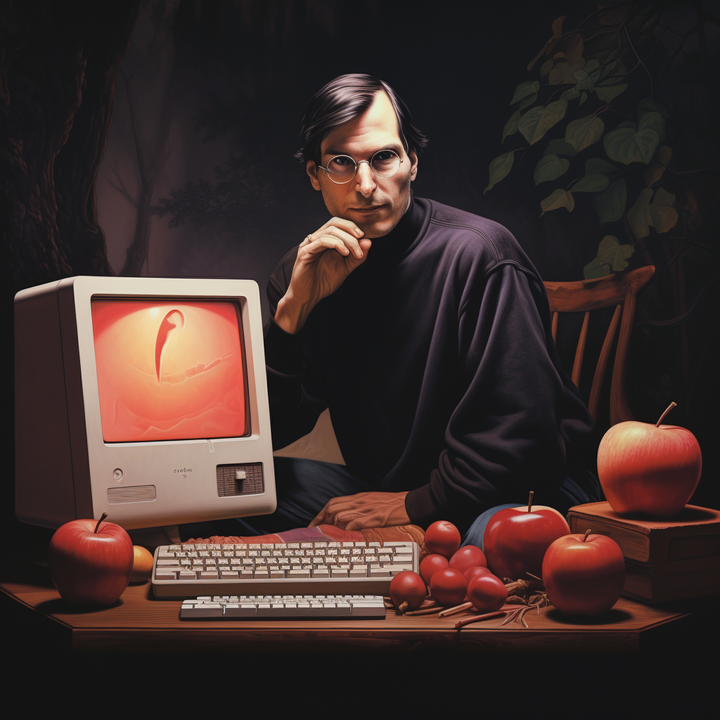Steve Jobs: Product Design and Aesthetics

Steve Jobs' approach to product design and aesthetics at Apple significantly influenced not just the company's product lineup but also the broader technology industry. He championed a philosophy where design was not merely about how a product looks but how it functions and feels to the user.
This approach, marrying functionality with aesthetics, became a cornerstone of Apple's identity, showcasing the critical role of design thinking in leadership and product development.
Factual Details of Jobs' Design Philosophy
Era: Throughout Jobs' tenure at Apple
Location: Cupertino, California, USA
Philosophy: Integration of Functionality and Aesthetics in Product Design
Steve Jobs believed that the design of a product was integral to its overall experience. This philosophy was evident in every Apple product, from the sleek and intuitive design of the original Macintosh to the iPhone's revolutionary interface. Jobs worked closely with designers like Jony Ive to ensure that Apple products were not just technologically advanced but also visually appealing and easy to use. This dedication to design excellence set Apple apart in the tech industry and became a key factor in its success.
Key Outcomes:
- Apple products set industry standards for design and functionality, influencing consumer expectations and competitor products.
- The emphasis on design helped Apple create a distinct brand identity.
- Apple's success demonstrated the commercial viability and value of integrating design thinking into business strategy.
Leadership Lessons from Jobs' Design Philosophy
1. Design as a Holistic Concept:
- Jobs’ approach to design, considering both aesthetics and functionality, underscores the importance of a holistic approach to product development.
2. Attention to Detail:
- His meticulous attention to detail in design illustrates how focusing on even the smallest elements can significantly enhance the overall user experience.
3. Innovation Through Design:
- Jobs used design as a tool for innovation, showing how creative design thinking can lead to groundbreaking products.
4. Differentiation Through Aesthetics:
- Apple’s focus on aesthetics helped differentiate its products in a crowded market, highlighting the role of design in creating a competitive edge.
5. Building a Design-Driven Culture:
- Jobs fostered a culture where design was a priority, demonstrating how leadership can cultivate an environment that values and integrates design into all aspects of the business.
Concluding Thoughts
Steve Jobs' emphasis on balancing functionality with aesthetics transformed Apple into a design icon and revolutionized the way companies approach product development. His leadership in this area was not just about making products that looked good but creating experiences that resonated with users on a deeper level. Jobs' legacy in design thinking is a powerful reminder of the importance of integrating aesthetics and functionality, not as separate elements, but as complementary facets of a singular, cohesive product vision.
Your Reflection
Reflect on the role of design in Apple’s success and consider:
- How can you incorporate design thinking into your leadership and business strategy?
- In what ways can a focus on aesthetics enhance the functionality and user experience of your products or services?
- How might attention to design detail impact your brand identity and market position?
- What steps can you take to foster a culture that values design as a key component of product development and innovation?



